12 of the best office plants – to boost your concentration and sense of wellbeing whilst at work
Discover how to create a lush oasis in your workspace with these houseplant ideas
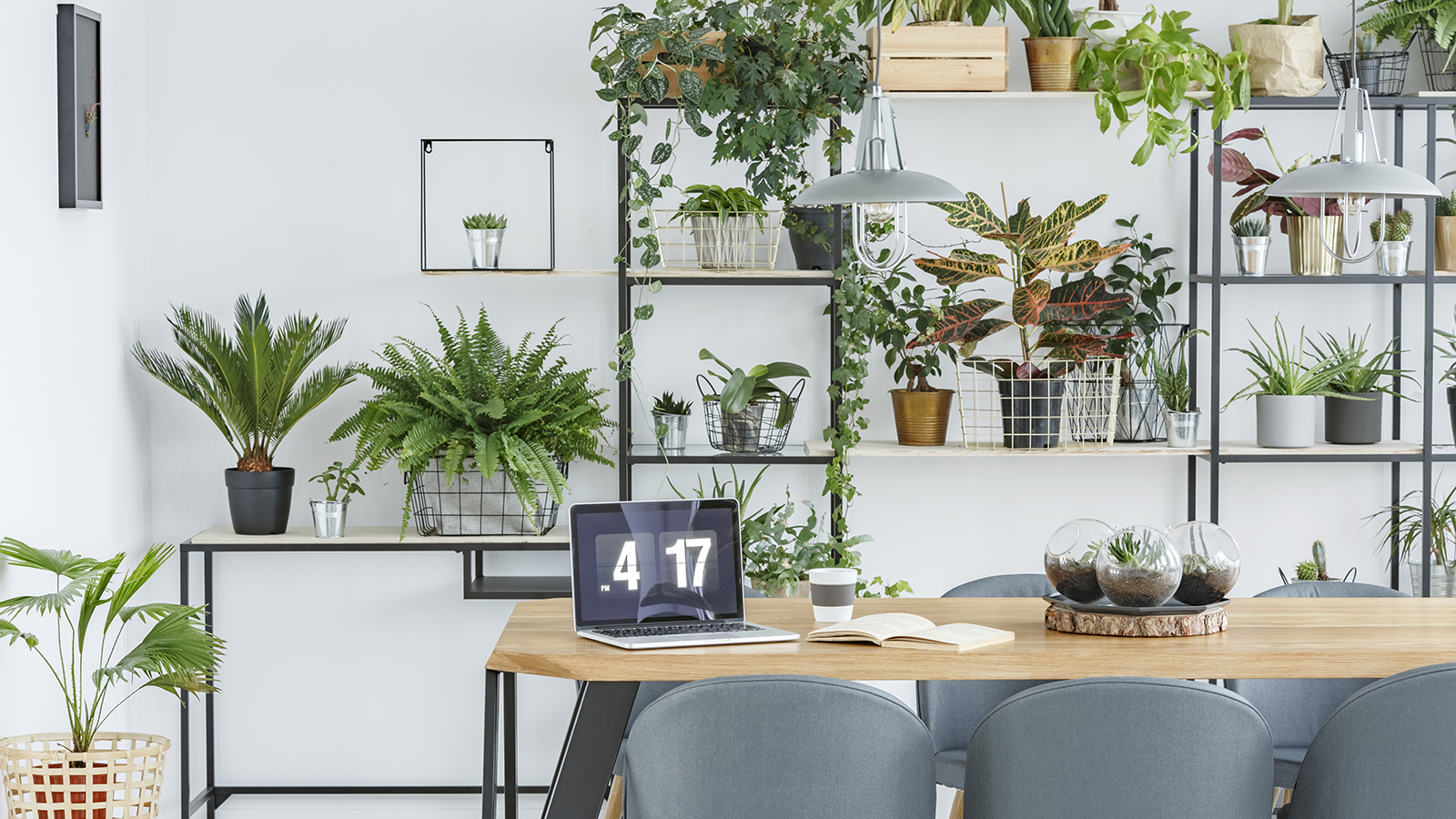
- 1. Spider plant (Chlorophytum comosum)
- 2. ZZ plant (Zamioculcas zamiifolia)
- 3. Dragon tree (Dracaena marginata)
- 4. Zebra haworthia (Haworthia fasciata)
- 5. Cape primrose (Streptocarpus)
- 6. Swiss cheese plant (Monstera deliciosa)
- 7. Umbrella plant (Schefflera actinophylla)
- 8. Fiddle-leaf fig (Ficus lyrata)
- 9. Kentia palm (Howea forsteriana)
- 10. Rubber plant (Ficus elastica)
- 11. Madagascar jasmine (Stephanotis floribunda)
- 12. Lipstick plant (Aeschynanthus radicans)
- FAQs

Adding office plants close to your desk or work space will create a lush, leafy environment that not only looks great but makes you feel happier too. With so many of us now working from home for at least part of the week, customizing your own little oasis with the flowers and foliage you love makes a lot of sense.
We know that being in a natural environment relieves stress, while plants of all shapes and sizes have been found to help restore concentration levels. The intricate patterns of leaves and flowers do this by holding our attention, while making no demands on us, which allows our brains to rest and recuperate.
So, to be happy and productive at work, why not install some of the best indoor plants in your workspace?
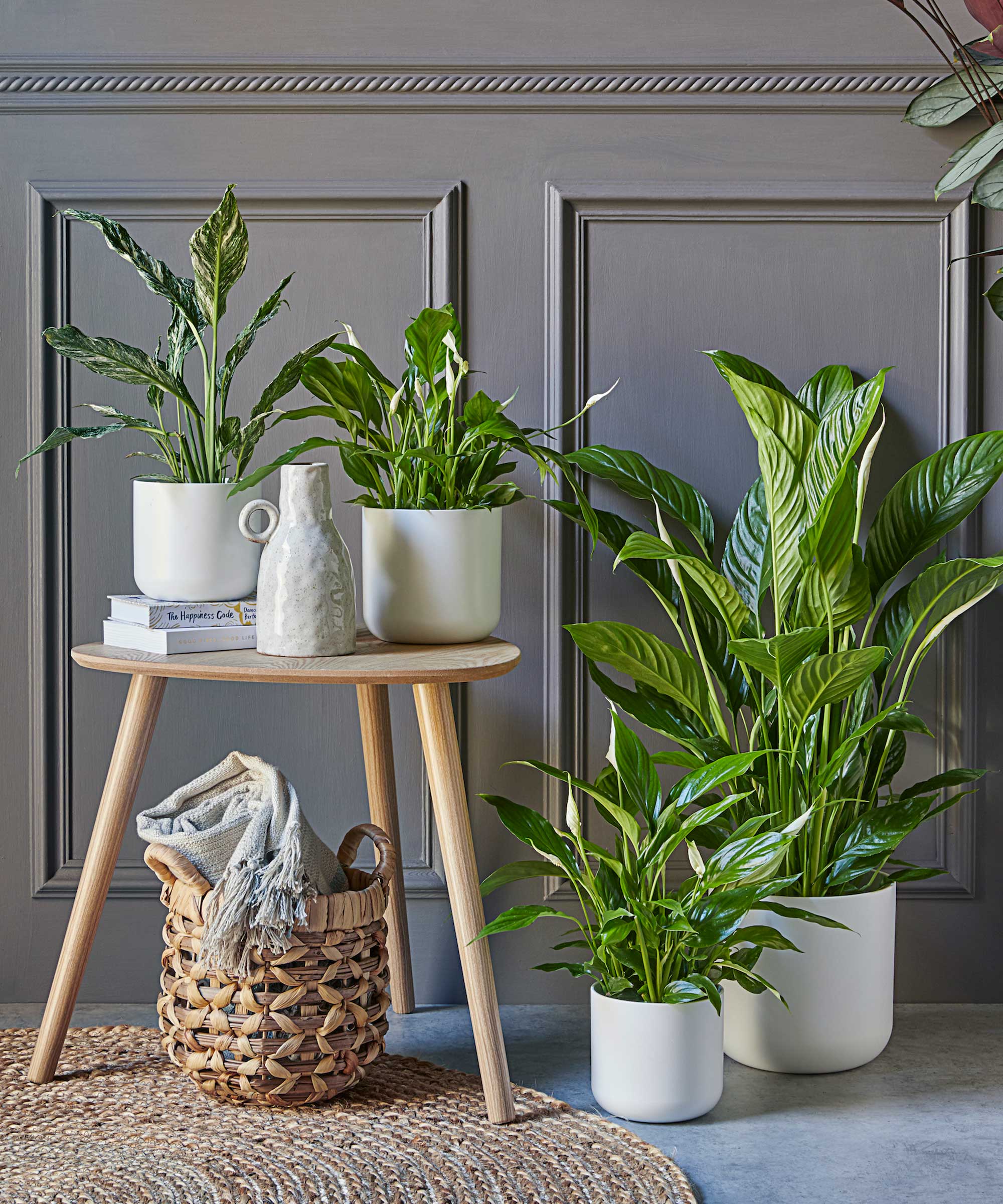
Brighten up your workspace with beautiful office plants
A study conducted by researchers at the University of Exeter in the UK found that enriching an office with desk plants can increase productivity by 15%, challenging the idea that minimalist workspaces are best. They also found that allowing staff to choose their own range of houseplants to decorate their workspace increased their sense of wellbeing by 47% and creativity by 45%.
Home office plants can help you to relax and enjoy your work. Whichever you choose, be sure that they suit your office conditions. The options below will help you to select the perfect desk plants for your indoor garden ideas.
1. Spider plant (Chlorophytum comosum)
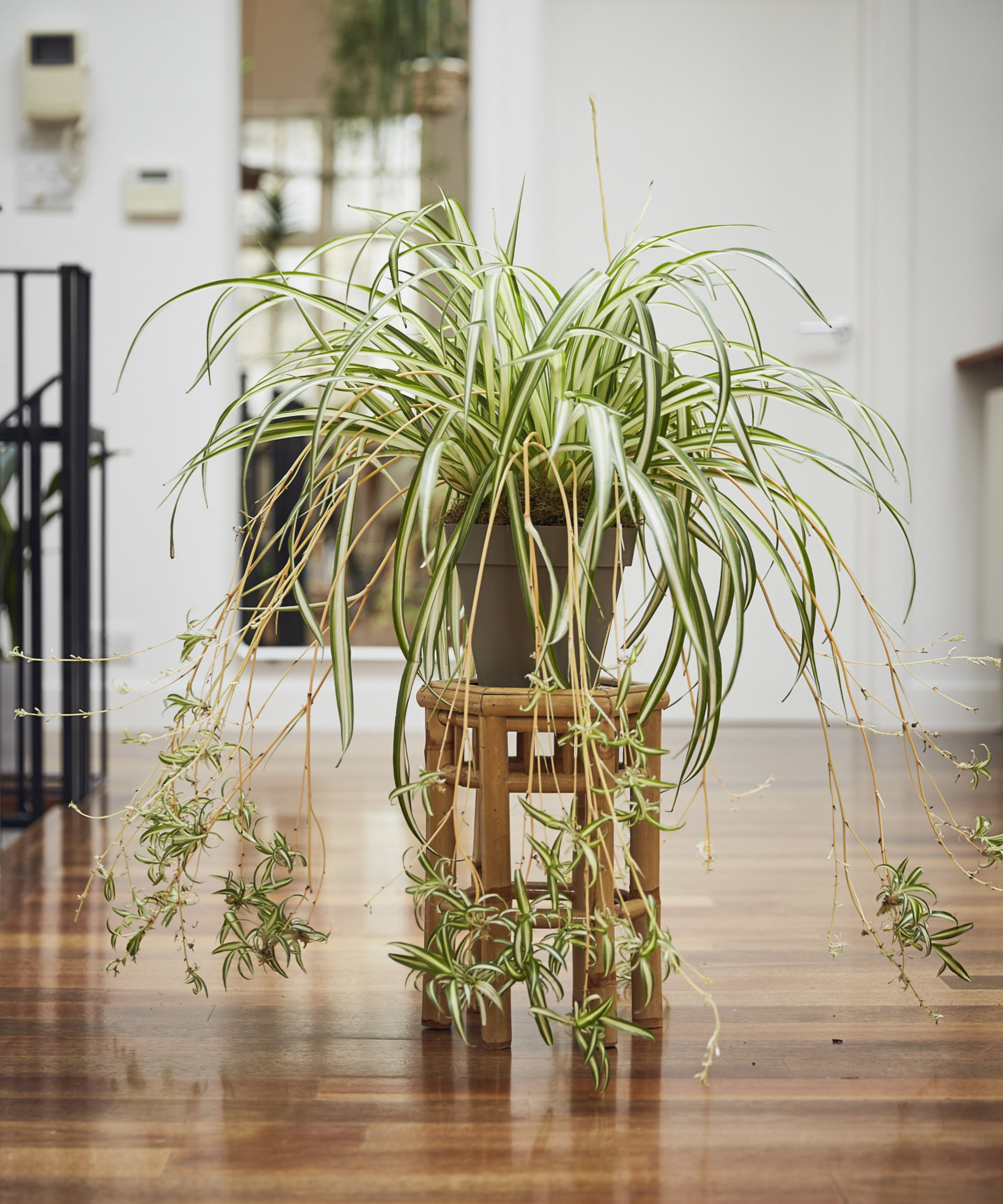
The much-loved spider plant produces a fountain of green and white striped leaves and is one of the easiest to care for. Happy in filtered sun or light shade, it will tolerate darker offices but may not produce its arching stems of baby plantlets if light levels are too low.
Try displaying it in a hanging basket close to your desk, where the little spider plants can dance all around the mother plant to create an eye-catching focal point. Keep the compost moist from spring to fall but only water when the top is dry in winter. The smaller plants can be used to propagate a spider plant.
One of the few ways to kill a spider plant is to overwater it, so plant it in a pot with drainage holes in the base and water over a sink, allowing excess moisture to drain away before returning it to a waterproof pot. Apply a balanced liquid fertilizer once every 3-4 weeks from spring to early fall.
2. ZZ plant (Zamioculcas zamiifolia)
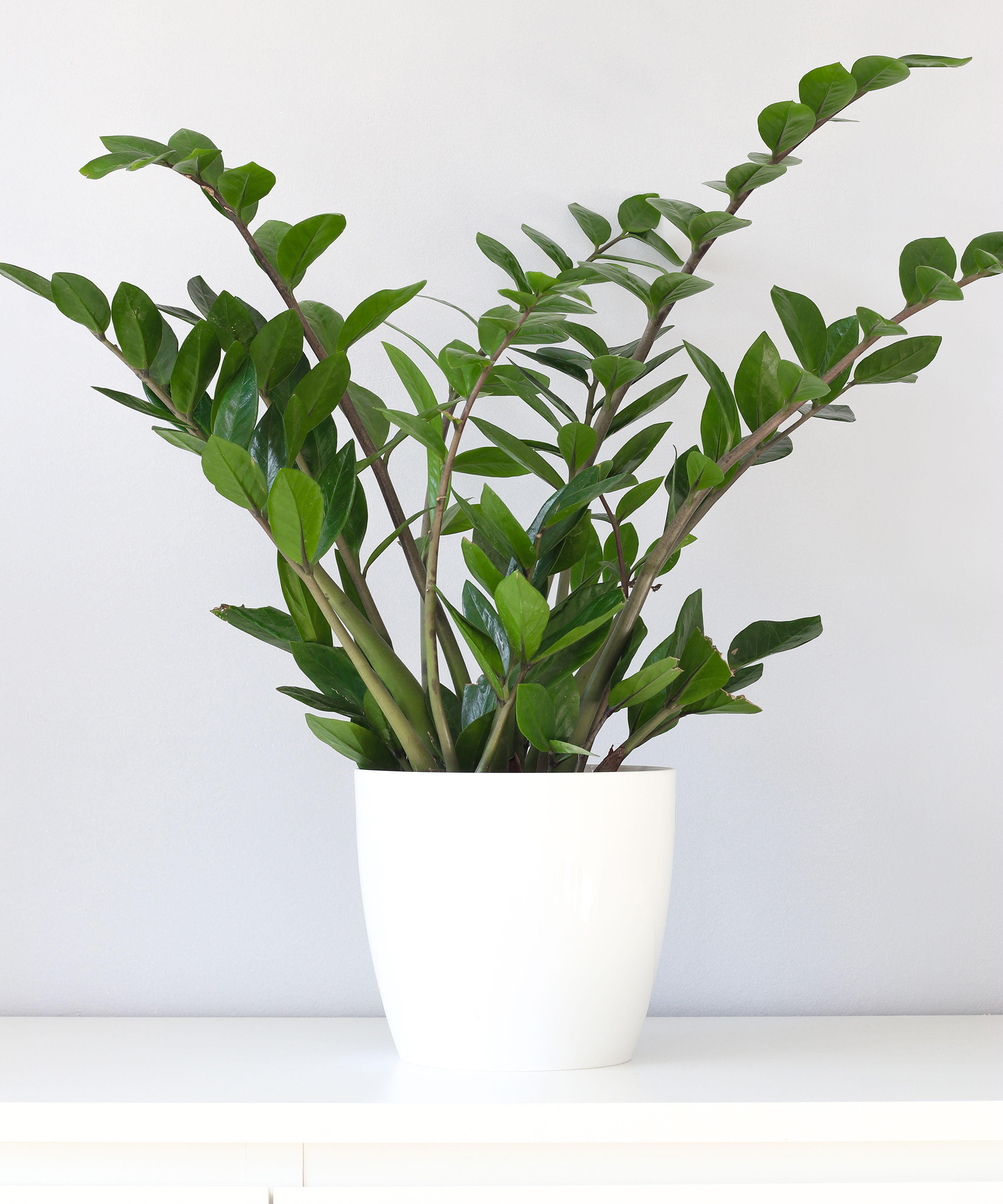
The easy-going leafy ZZ plant will grow in a bright area out of direct sun or fairly deep shade, decorating a large desk or floor space with its tall stems of glossy green foliage. Try this large ZZ plant at The Sill.
It's a low maintenance indoor plant which is ideal for beginners or those with little spare time. Simply water it when the top of the compost feels dry, and reduce the frequency to once a month in winter.
It thrives on neglect but will not tolerate waterlogged compost, so plant it in a pot with drainage holes and follow the watering advice for spider plants. Apply a half-strength balanced liquid fertilizer once a month from spring to fall.
3. Dragon tree (Dracaena marginata)
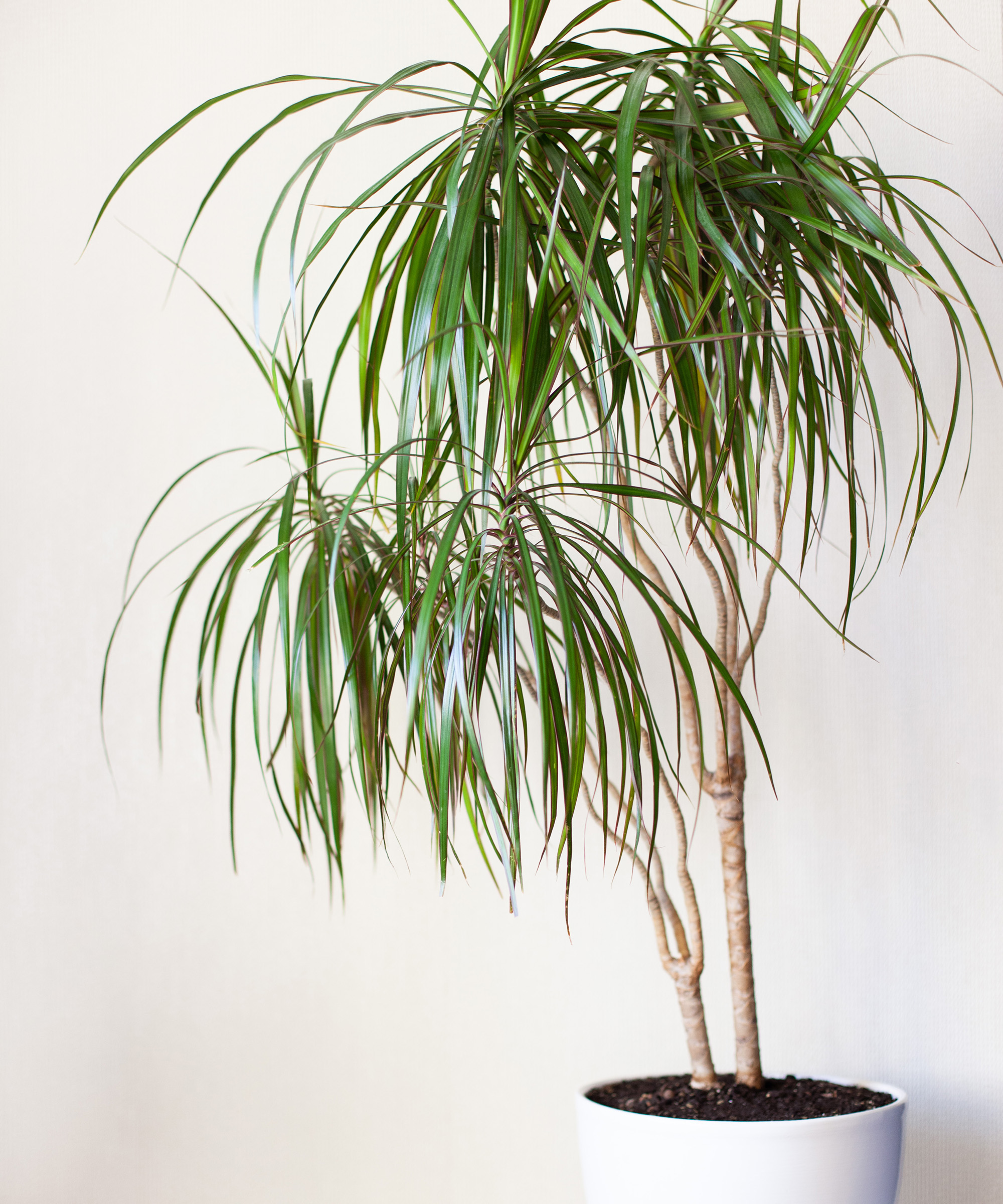
The green and cream striped foliage of this tall palm-like plant will help to hold your attention, allowing your brain to relax and improving concentration levels. A good choice for beginners, the dragon plant is also very easy to look after.
Display this indoor tree in filtered sun or light shade where it has space to grow, as plants can reach up to 5ft or more in height and almost 3ft in spread when mature.
Keep the compost moist from spring to fall but leave the top inch or so to dry out between waterings in winter. Apply a half-strength balanced liquid fertilizer once a fortnight from spring to fall.
4. Zebra haworthia (Haworthia fasciata)
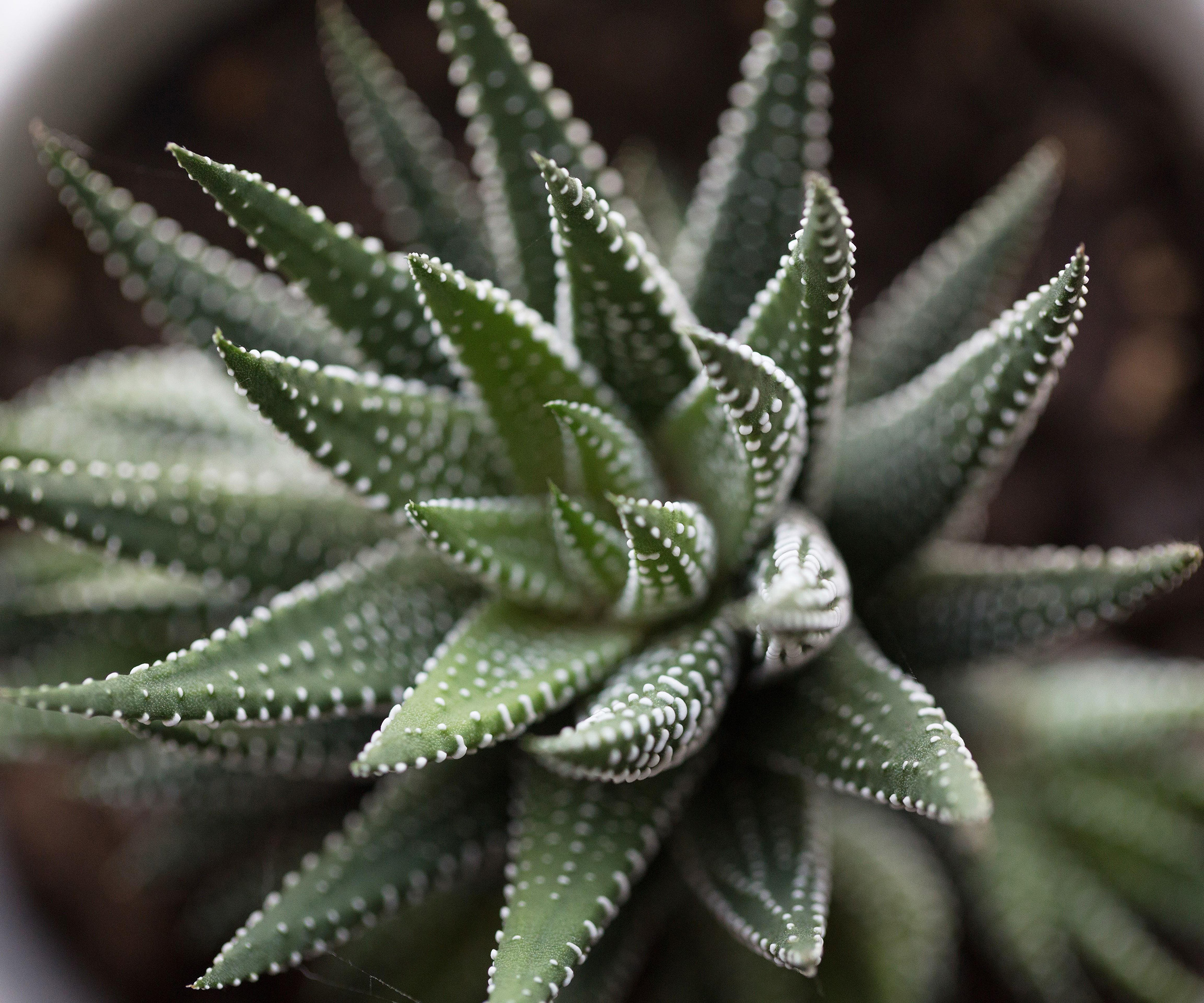
Perfect for a desk in a bright spot that is out of direct sun in summer, these little succulents have great stage presence as office plants despite their small size.
They produce a rosette of fleshy dark green leaves adorned with white stripes, and tubular white flowers on tall wiry stems in summer, providing plenty of interest to catch your gaze as you work.
Easy to care for, just guard against rot by watering only when the top of the compost feels dry, and giving the plant even less moisture in winter, applying just enough to prevent the leaves from shriveling. Apply a half-strength balanced liquid fertilizer once every 4–6 weeks from spring to fall.
'Of course, having just one plant in your home office is great. But a display of smaller desk plants and standing statement specimens will create a cohesive scheme,' says Teresa Conway, Deputy Gardens Editor at Homes & Gardens.
'Aim to select from groups of plants which all tolerate the same conditions as your office space,' she adds.

Teresa has been creating and editing a variety of rich garden content for over 6 years, across many brands including Homes & Gardens, Country Homes & Interiors and Living Etc. She was Deputy Editor on Gardening Etc as well as a judge on the panel at the prestigious Society of Garden Designers awards.
5. Cape primrose (Streptocarpus)
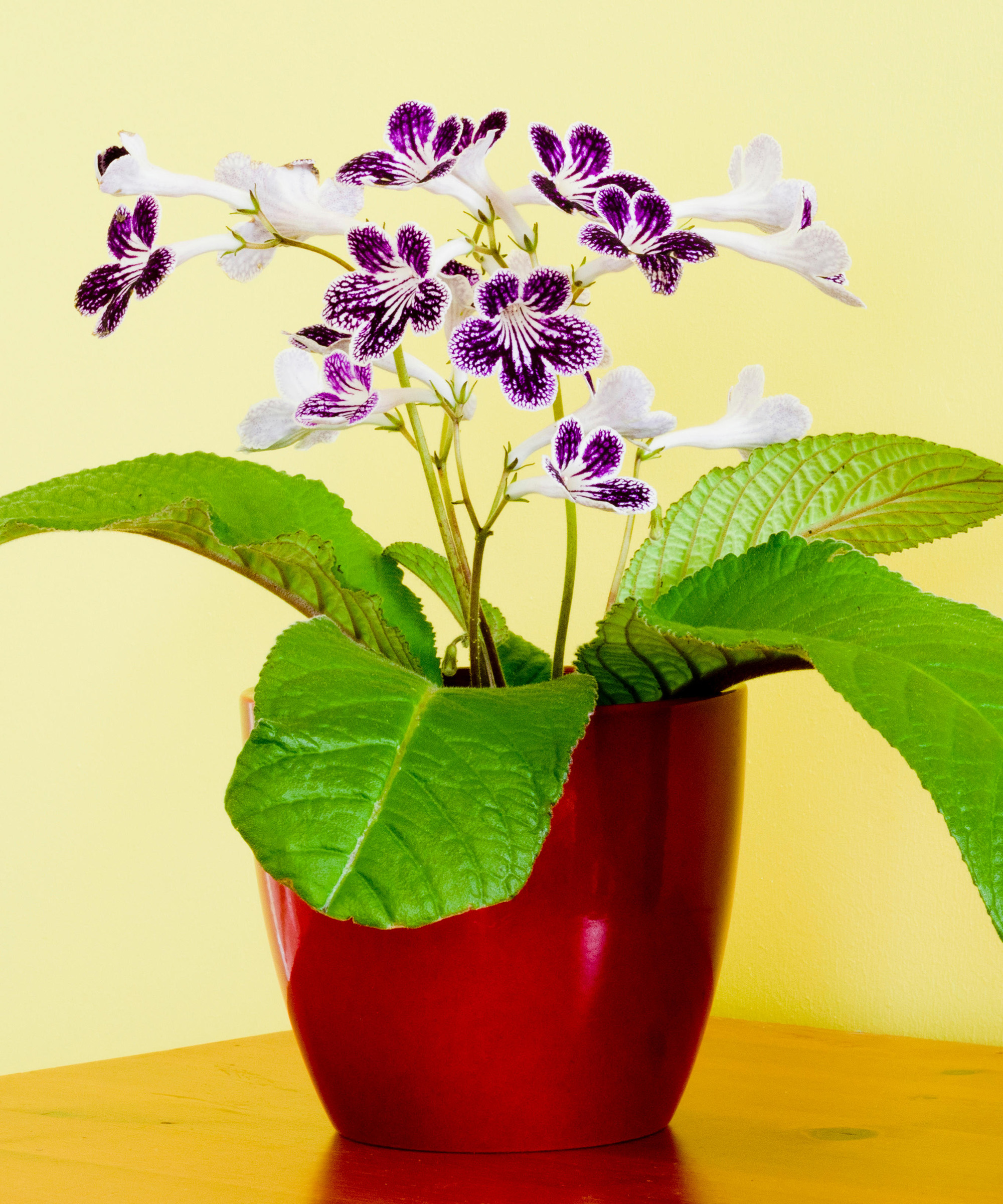
Indoor flowering plants such as cape primroses can capture your interest, helping your brain to reboot and focus on tasks. These compact office plants fit neatly on a desk and in spring and summer erupt with colorful blooms in shades of pink, red, white, or purple - many are bicolored or patterned.
The flowers are set off by a skirt of oval, textured green leaves. Cape primroses like a position in filtered sun or light shade and should be watered only when the top of the compost feels dry, reducing moisture levels in winter.
Guard against root rot by planting them in pots with drainage holes and feed with a high potash fertilizer such as a tomato feed once a month from spring to fall.
6. Swiss cheese plant (Monstera deliciosa)
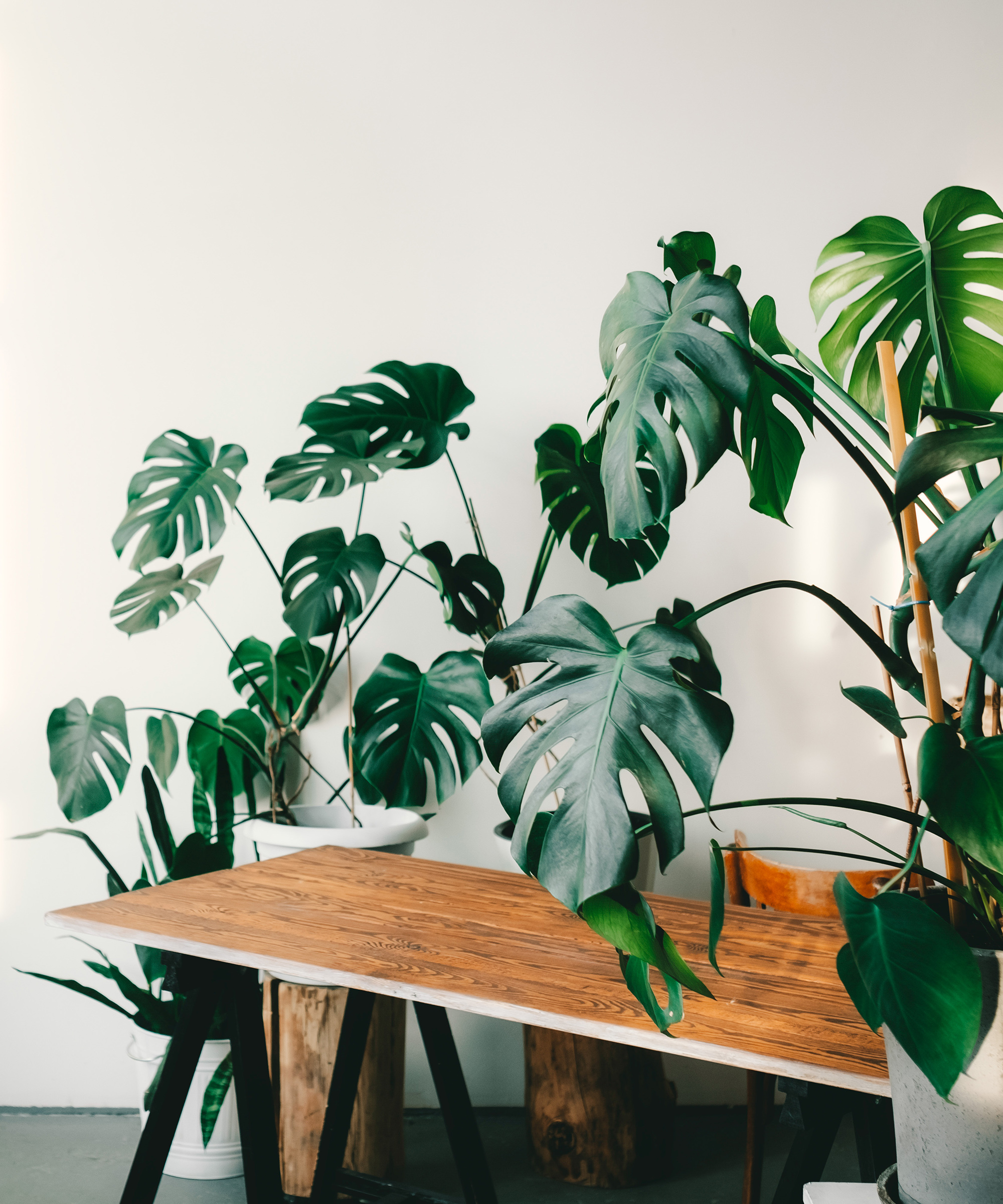
Prized for their large, glossy, dark green, lobed leaves, the foliage of mature monstera is also peppered with holes, hence the name. While young plants will suit a pot on a desk, as these large climbers grow, they will need to be replanted into a larger container and the long stems attached to a mossy pole, or wires or trellis attached to a wall, to prevent them from wandering across the floor.
However, if you have space for this big beauty, it’s an easy indoor plant. Happy in filtered sun or shade, water when the top of the compost feels dry and reduce watering slightly in winter.
Mist every few days or set the pot on a tray of damp pebbles to raise humidity levels, and apply a half-strength balanced liquid fertilizer once a month from spring to fall.
7. Umbrella plant (Schefflera actinophylla)
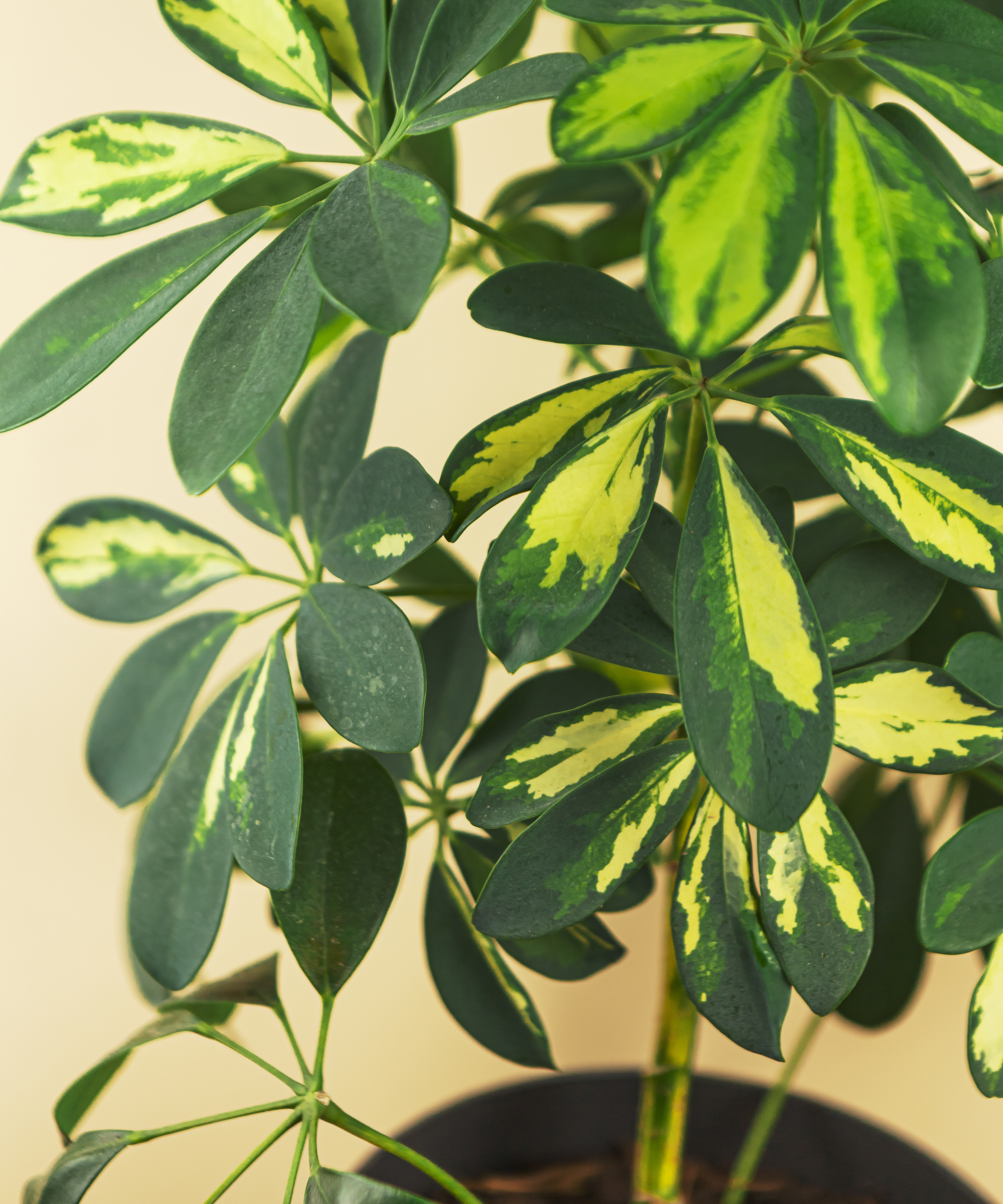
If you're searching for something almost indestructible for your home office plants, the tree-like umbrella plant is perfect for a large pot on the floor next to a workspace in filtered sun or shade. The most popular are those with variegated foliage, which feature a splash of yellow on each of the dark green divided leaves.
Water when the top of the compost feels dry, reducing the frequency in winter to about once a month. To prevent root rot, plant in a pot with drainage holes at the base and check that the compost never becomes waterlogged by tipping away any excess at the bottom of its waterproof container or saucer. Apply a half-strength balanced liquid fertilizer monthly from spring to fall.
If you like the idea of having desk plants with interesting foliage, you might want to consider including a peacock plant in your collection too.
8. Fiddle-leaf fig (Ficus lyrata)
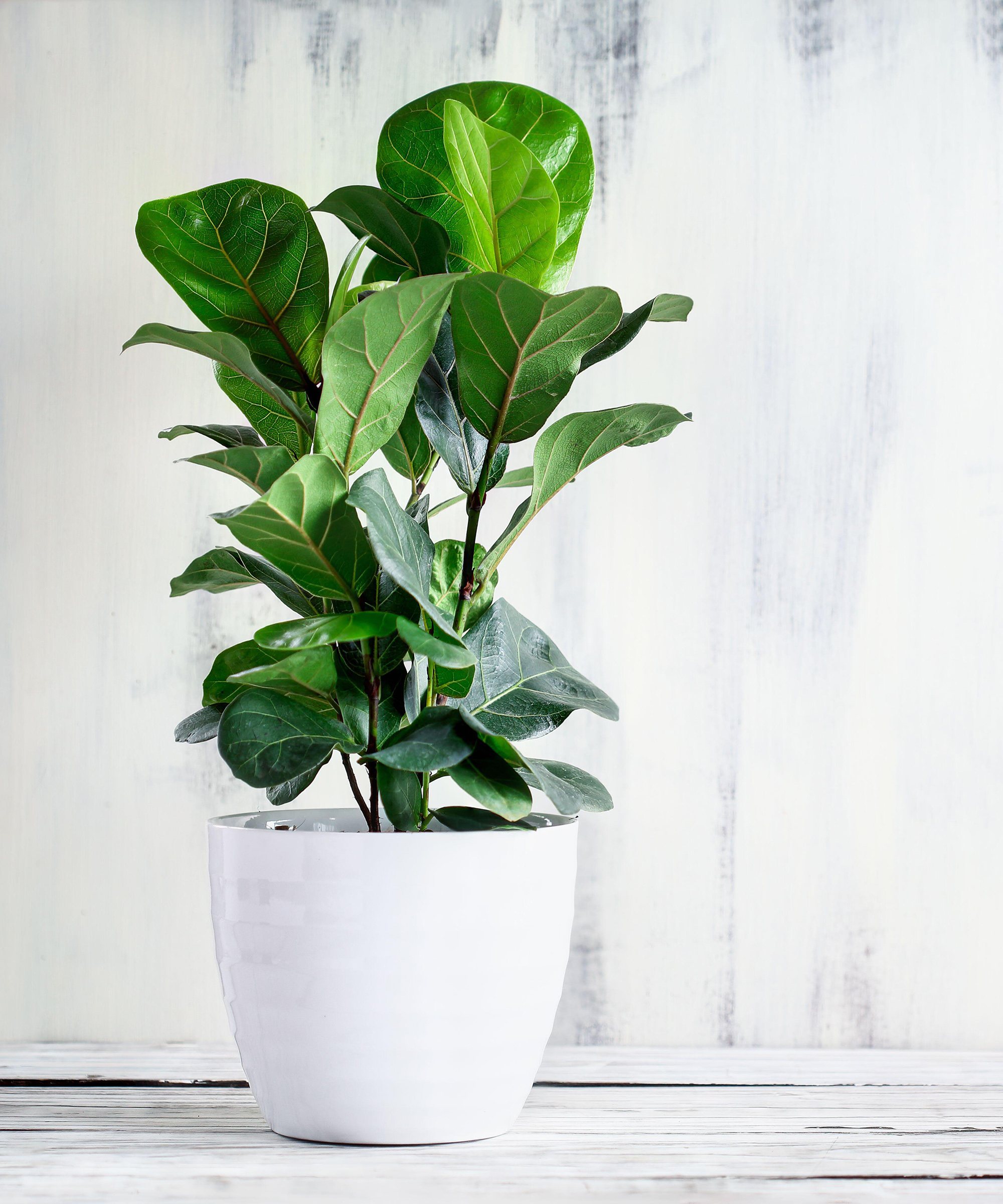
Grown for its large, slightly lobed leaves that look like the body of a violin or fiddle, this easy plant prefers a position in filtered sun. It can reach up to 3ft or more in height and spread, and is best for a large pot set on the floor next to your desk.
Water your fiddle leaf fig when the top of the compost feels dry and keep the plant just moist over winter – also follow the advice for the umbrella plant to prevent root rot. Apply a half-strength balanced liquid fertilizer once a month from spring to fall.
9. Kentia palm (Howea forsteriana)
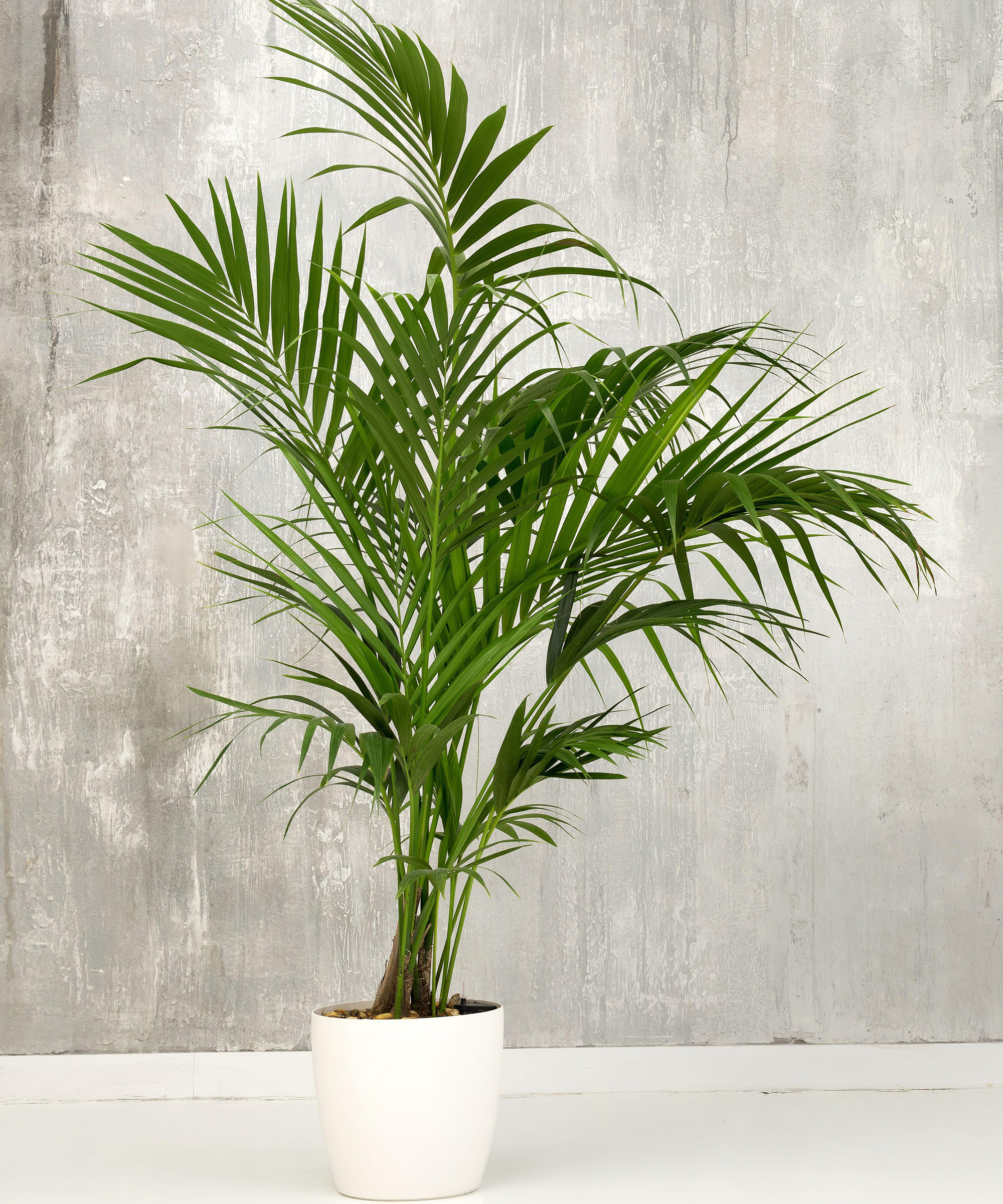
This tall, shade-loving palm is the perfect low light indoor plant for an office without much natural light, where its fountain of dark green leaves will add structure and a tropical note to your workspace. Plant it in a pot with drainage holes in the base and set it in a waterproof container or on a large saucer on the floor.
Water when the top of the compost feels almost dry and reduce watering slightly in winter (also follow the tips for the umbrella plant to prevent root rot). This palm likes some humidity so it's also one of the best bathroom plants.
Alternatively mist it every few days or set it on a tray of damp pebbles. Apply a balanced liquid fertilizer once every two weeks from spring to early fall.
10. Rubber plant (Ficus elastica)
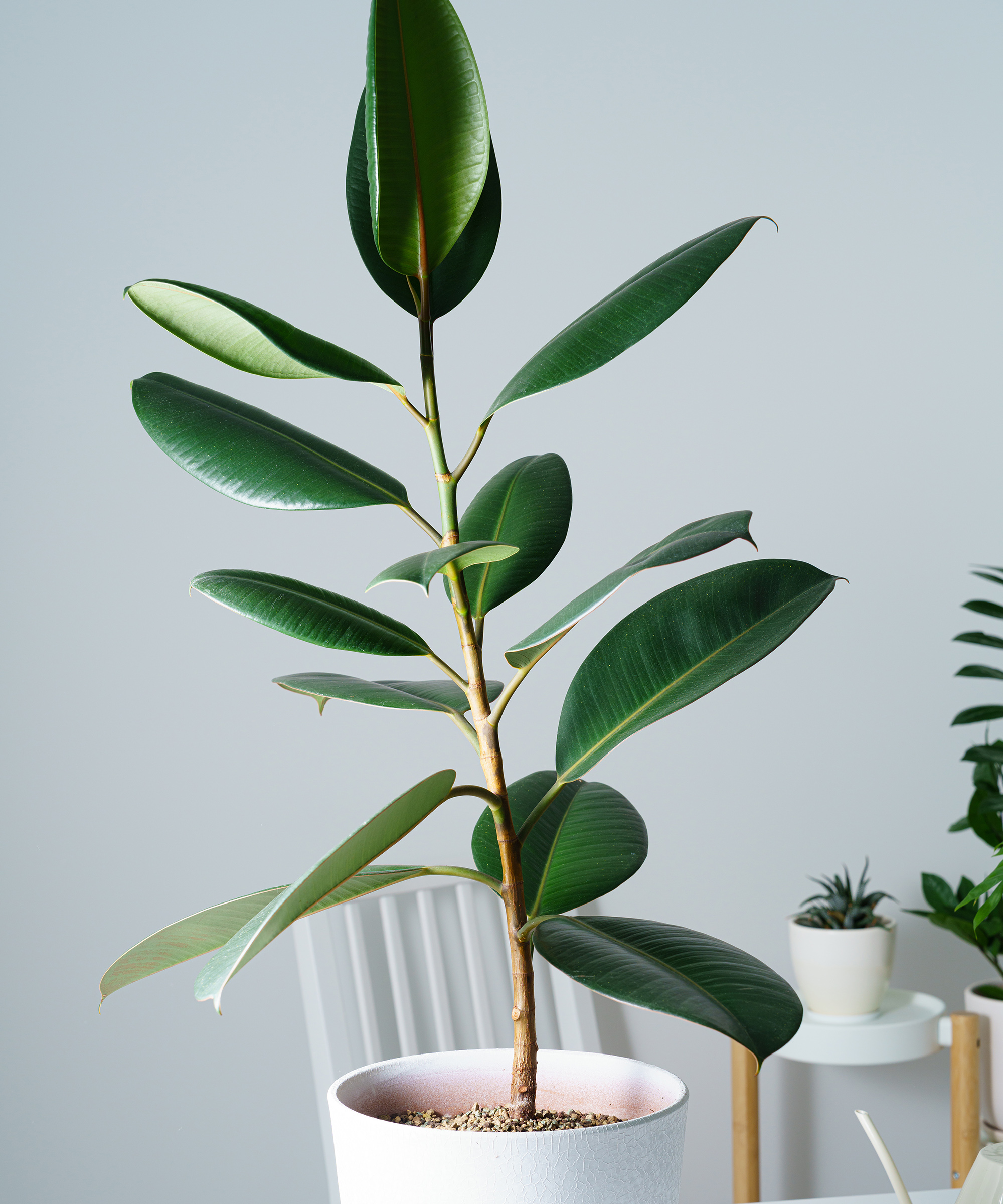
The large glossy green leaves of this tall indoor plant will tolerate low light conditions, making it a good choice for shady offices. If you have a little more sunlight, try a colorful variegated form, such as ‘Belize’ which sports cream and pink markings.
Rubber plant care is fairly easy, and ideal for a busy office environment. Just water when the top of the compost feels dry, keeping it even drier over winter, and mist the leaves now and again or set on a tray of damp pebbles to raise humidity levels.
Apply a half-strength balanced liquid fertilizer once every 2–3 weeks from spring to fall.
11. Madagascar jasmine (Stephanotis floribunda)
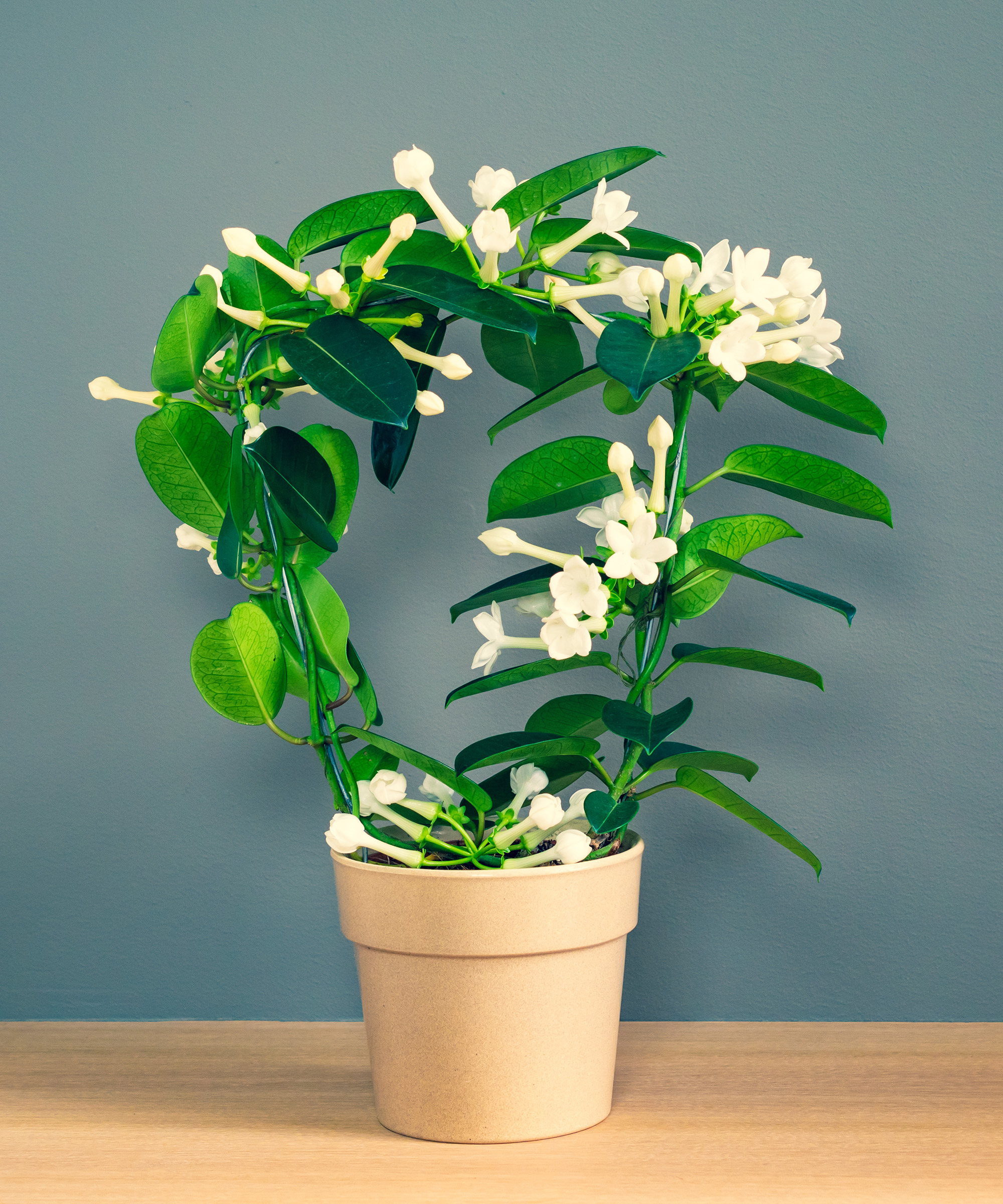
Also known as ‘bridal wreath’, the waxy white flowers of this twining climber will fill your office with a delicious sweet scent when they appear in summer among the dark green glossy leaves.
Plants are often grown with the stems trained on a wire hoop. They will remain compact for a while, but may need a larger trellis or wires attached to the wall of your office to support them as the plant matures.
Place your Madagascar jasmine, such as this Rare Creme & Green Madagascar Jasmine 4" Pot at Walmart, in a bright spot, out of direct sun, and keep the compost moist from spring to fall – water only when the top of the compost feels dry in winter.
Mist the leaves regularly or set the plant on a tray of damp pebbles to raise the humidity around it, and feed with a high potash fertilizer, such as tomato feed, every two or three weeks from spring to early fall. You can trim the stems in early spring to keep the plant in check.
12. Lipstick plant (Aeschynanthus radicans)
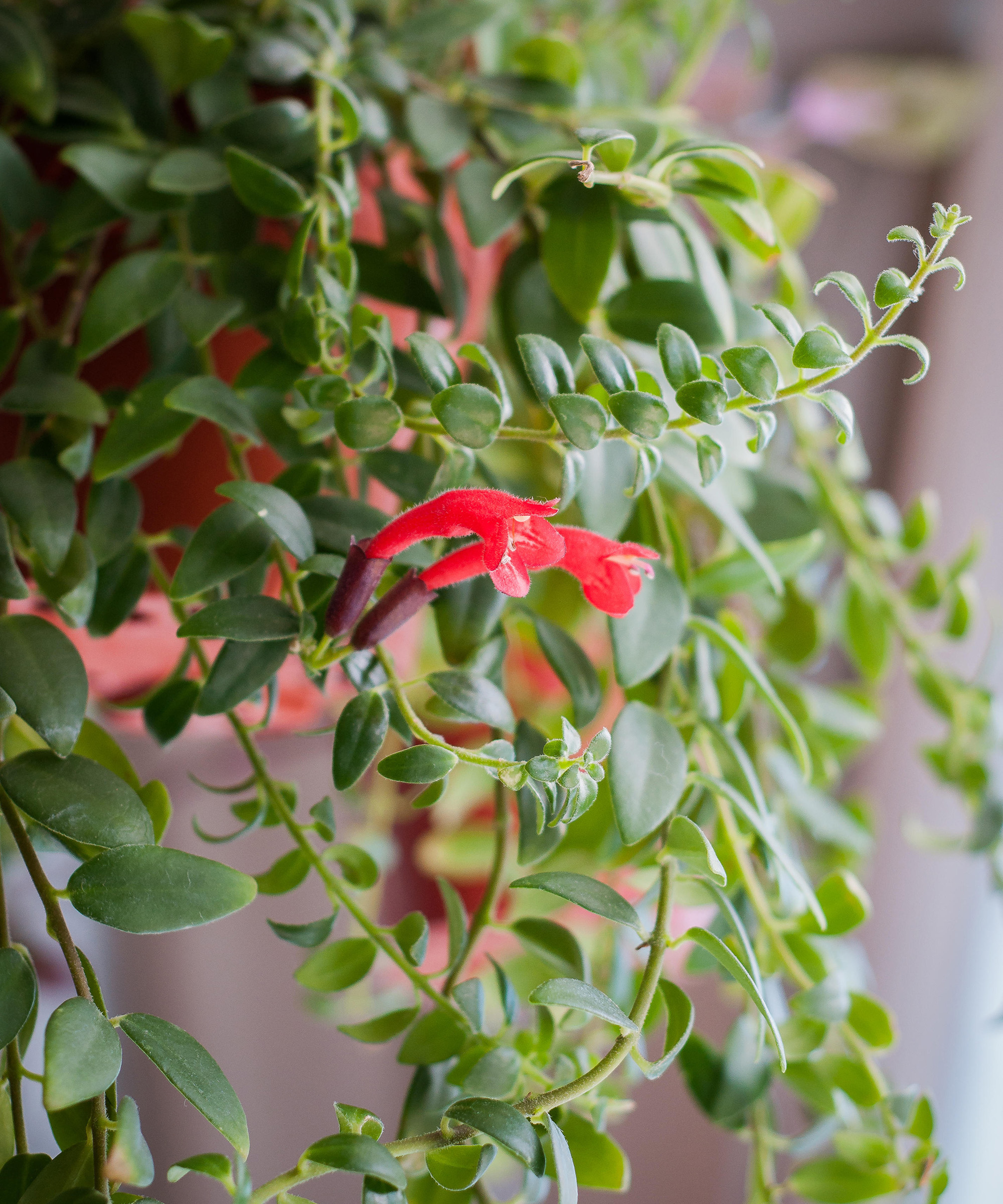
The unusual tubular purple and red flowers give rise to the lipstick plant’s name and will hold your gaze and help you to relax when they appear on the tips of the trailing leafy stems.
You can display it in a hanging basket close to your desk in a bright position, out of direct sun. As you may expect from this dazzling prima donna, it requires a little more care than many of the leafy houseplants.
Irrigate using tepid rainwater or distilled water when the top of the compost feels dry (if using tap water, leave it in a container for 24 hours for the chlorine to dissipate before applying it).
In winter, keep the compost almost dry. Mist these indoor plants regularly and feed with a half-strength balanced liquid fertilizer once a month from spring to early fall.
FAQs
Is it good to have plants in your office?
Indoor plants are great for any office, creating a beautiful, natural environment that will boost your productivity and feelings of wellbeing. Any home office plants that you like the look of will do the trick, so try adding a couple of desk plants, with one or two larger specimens on pots on the floor, if you have the space.
Where an office looks out over a garden or park, try placing some houseplants near the window so that they take your gaze out further to the landscape beyond, since looking at nature also helps us to unwind.
How do I choose the right plants for my office space?
First, think about where you can display your plants and choose a selection that will not outgrow their space, or that you can move to another spot if they do. For example, a spider plant, cape primrose or zebra haworthia would fit neatly on a desk, while the larger dragon plant or monstera will suit a pot on the floor next to your work area.
Also think about how much time you have to care for your plants and opt for easy types that need little watering or feeding if your work life is hectic. Remember that tropical plants that like humidity will need to be misted or you can increase moisture in the air by adding a layer of small pebbles to a waterproof tray, placing the plant pot on them, and then topping up the tray with water.
Is office light enough for plants?
If you have a window in your office, there will be sufficient light for houseplants: simply assess the level of sunlight the room receives and choose those that suit your conditions. Foliage houseplants with dark green leaves are usually best for shadier rooms.
If you have very little light – in a basement, for example – and wish to broaden your choices, install a grow light with a built-in timer. These lights come with various light intensity options to suit your plants, while the timer can be programmed to mimic day and night-time.
If you're interested in theming your indoor plant displays by room, then assessing the room conditions are important.
Home offices and workspaces may have drying air conditioning units. Whereas if you're interested in kitchen plants, you will be looking at varieties which favor a more humid environment.
Sign up to the Homes & Gardens newsletter
Design expertise in your inbox – from inspiring decorating ideas and beautiful celebrity homes to practical gardening advice and shopping round-ups.

Zia Allaway is a garden book author, editor, and journalist, and writes for a range of gardening and women’s magazines, including Easy Gardens, Homes & Gardens and Livingetc, as well as The Guardian and The Daily Telegraph newspapers. She has also written books for the Royal Horticultural Society and Dorling Kindersley publishers, including Eco-Gardening, Compost, Low Maintenance, Practical House Plant Book, Practical Cactus & Succulent Book, Indoor Edible Garden, What Plant Where, and the Encyclopedia of Plants and Flowers.
-
 Kelly Ripa and Mark Consuelos's dining room shelves combine unexpected elements for the ultimate storage solution – it's multi-functional and replicable
Kelly Ripa and Mark Consuelos's dining room shelves combine unexpected elements for the ultimate storage solution – it's multi-functional and replicableGreen shelves in Kelly Ripa and Mark Consuelos' dining room cleverly combine storage to accomplish separate purposes in a pretty way
By Sophie Edwards Published
-
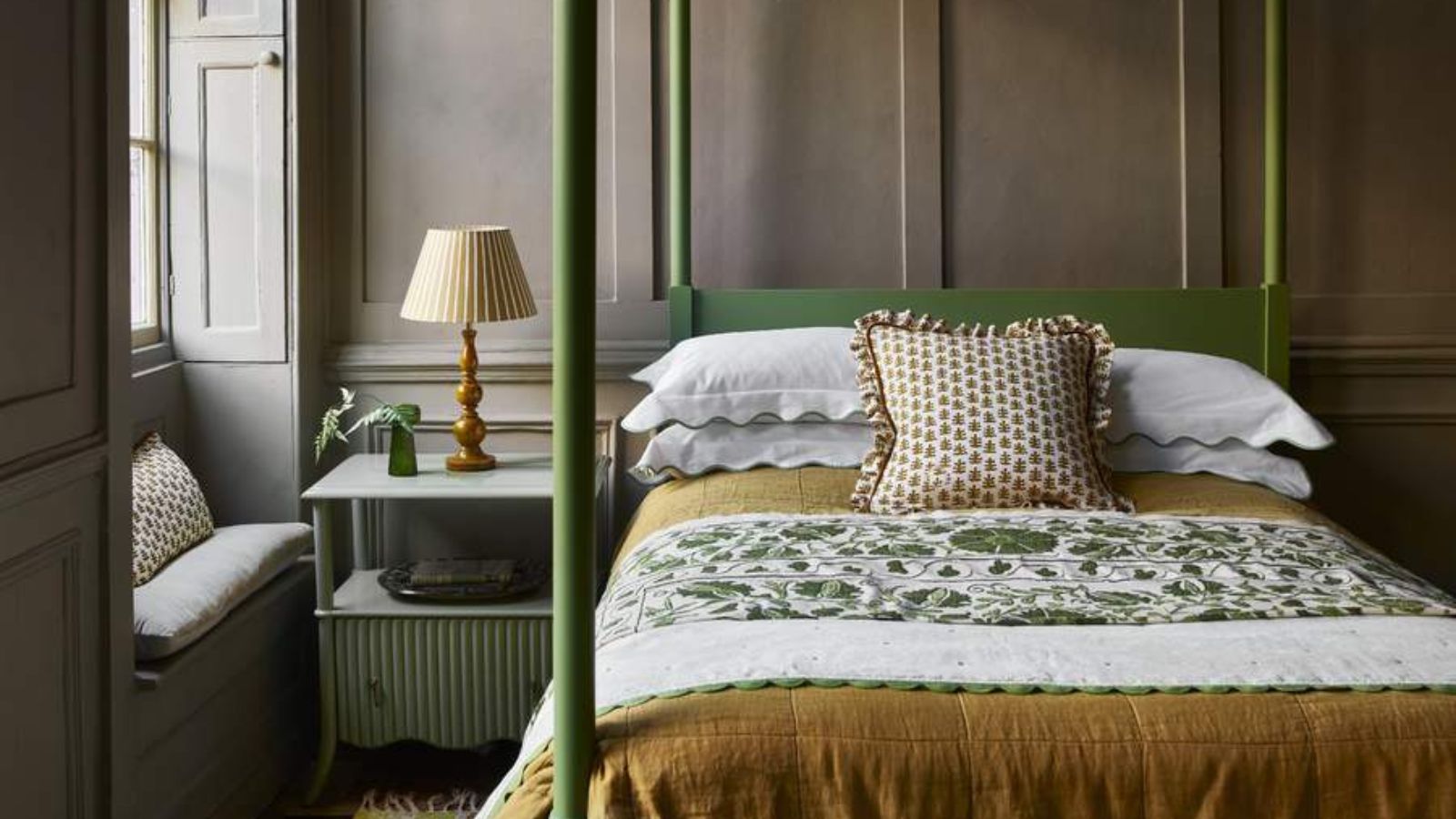 I'm a Sleep Editor – these are the 7 mattress features I think are gimmicks and not worth the spend
I'm a Sleep Editor – these are the 7 mattress features I think are gimmicks and not worth the spendIn my search to find the world's best mattress, I've come across some duds − learn from my mistakes and avoid these mattress gimmicks
By Emilia Hitching Published